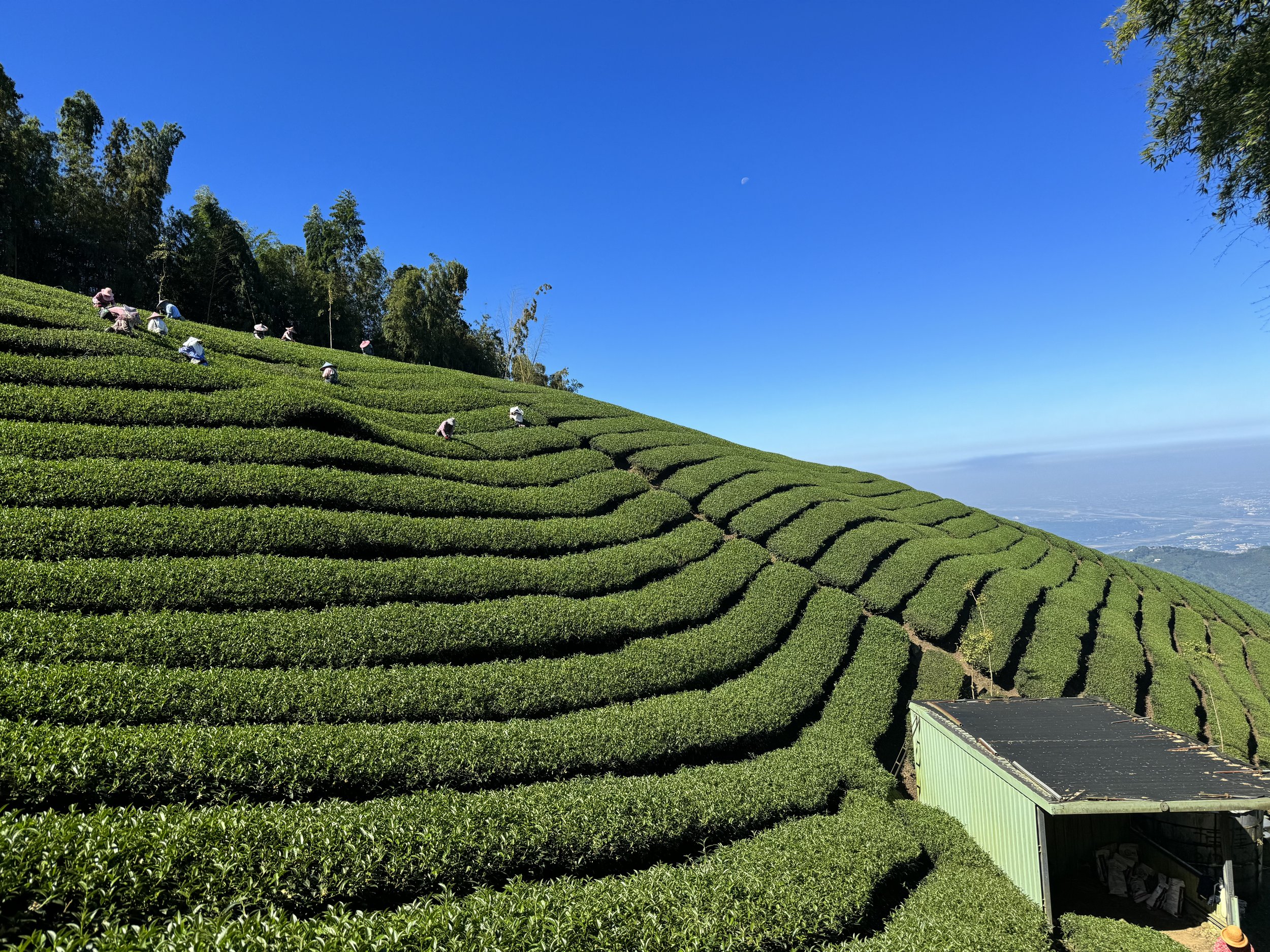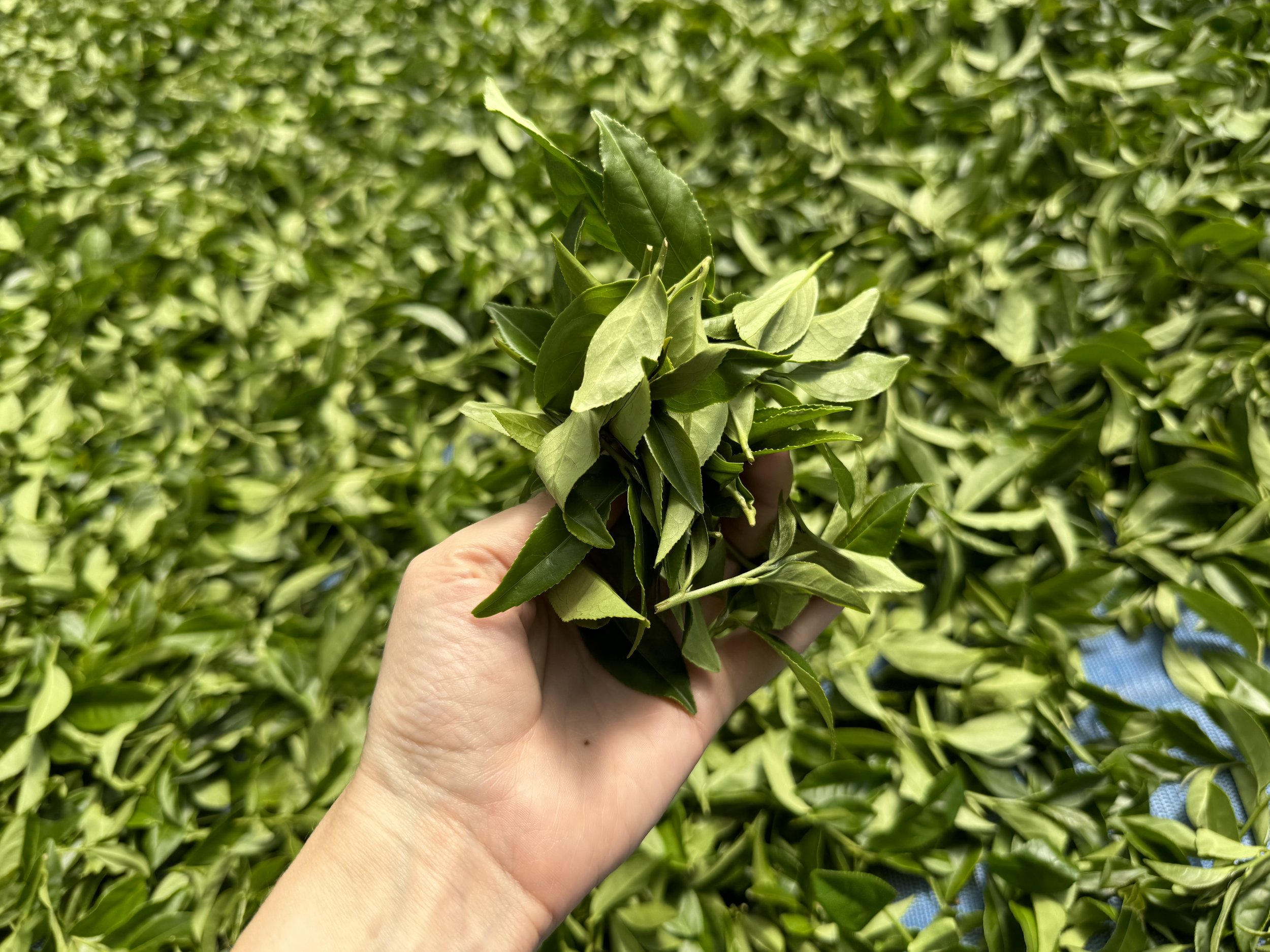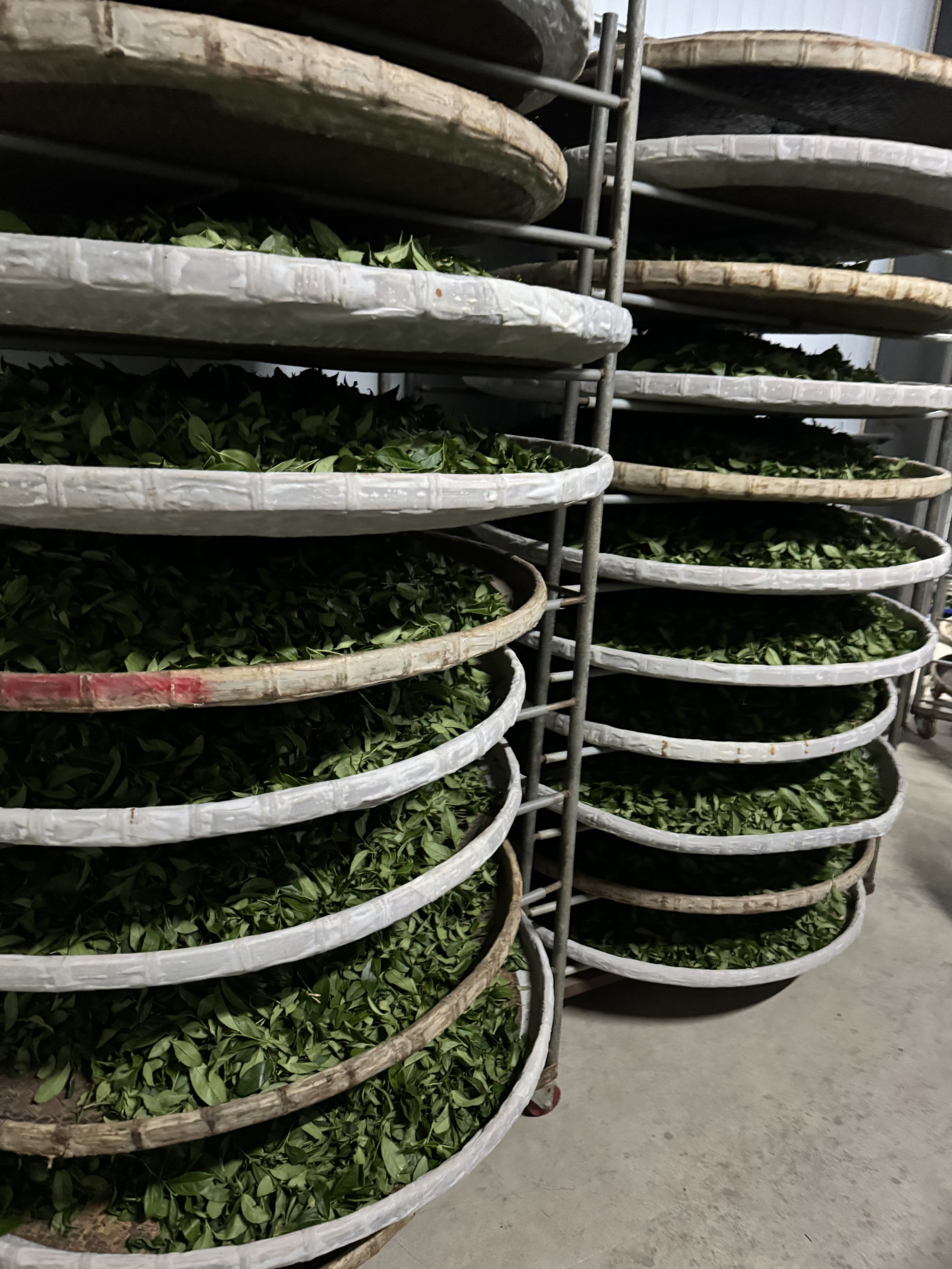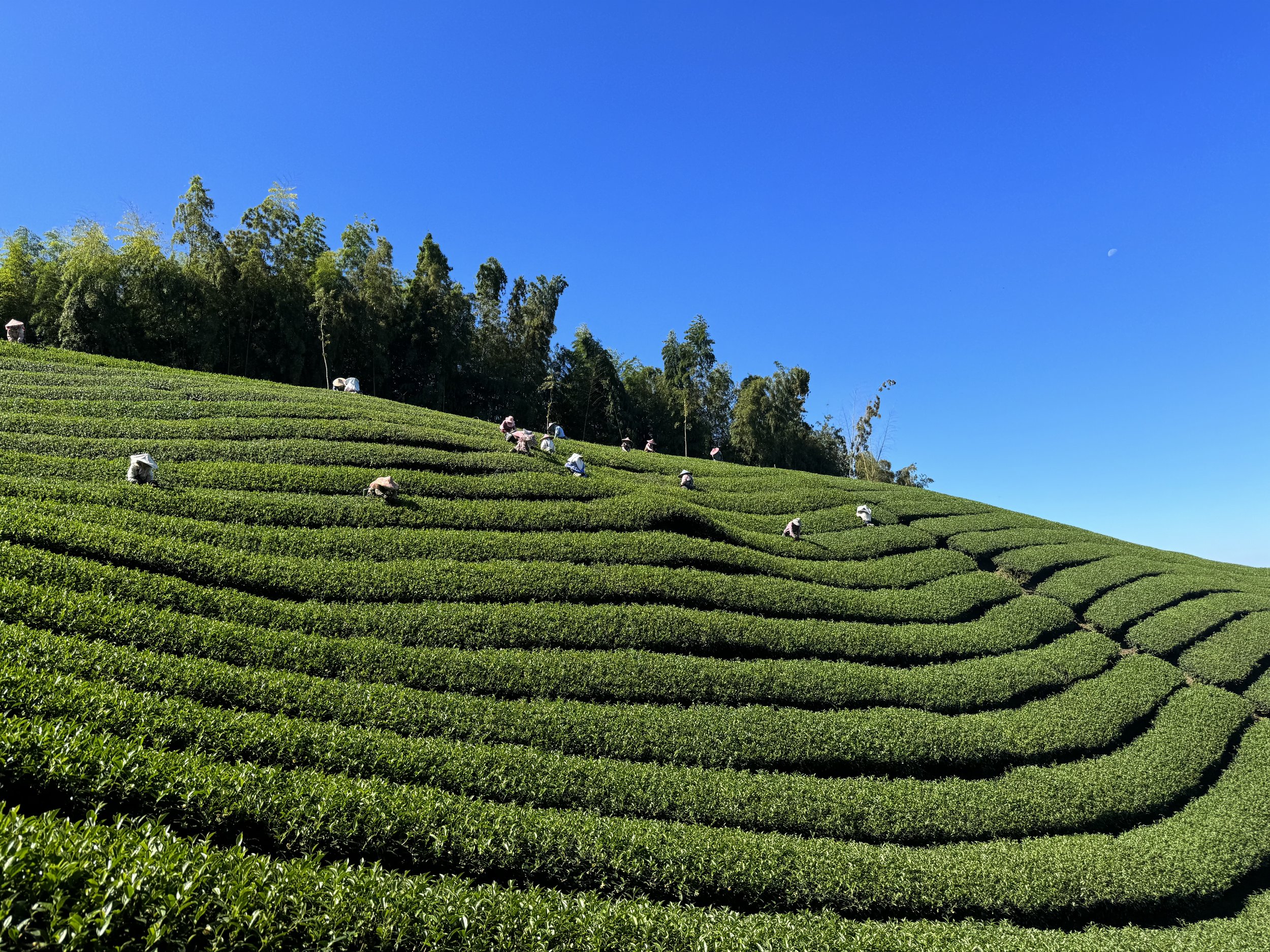green oolong (winter '23)
Origin : Shanlinxi, Lugu township, Nantou county, Taiwan
Organic tea farm
Elevation : 1400 meters
Cultivar : Qingxin (青心)
Harvest: Winter ‘23, first flush
Oxidation : 10%
Roast: unroasted
Tasting Notes: Butter lettuce, snow pea, water chestnut
Recommended: Steep 5g / 208 degrees / 60 sec / multiple brews
Origin : Shanlinxi, Lugu township, Nantou county, Taiwan
Organic tea farm
Elevation : 1400 meters
Cultivar : Qingxin (青心)
Harvest: Winter ‘23, first flush
Oxidation : 10%
Roast: unroasted
Tasting Notes: Butter lettuce, snow pea, water chestnut
Recommended: Steep 5g / 208 degrees / 60 sec / multiple brews
Origin : Shanlinxi, Lugu township, Nantou county, Taiwan
Organic tea farm
Elevation : 1400 meters
Cultivar : Qingxin (青心)
Harvest: Winter ‘23, first flush
Oxidation : 10%
Roast: unroasted
Tasting Notes: Butter lettuce, snow pea, water chestnut
Recommended: Steep 5g / 208 degrees / 60 sec / multiple brews
Drink this tea. It is superb. Personal opinion: Winter harvest is the best season. IYKYK. This year we had the pleasure of participating in making Uncle’s green oolong. In a blind taste test on Day 1, I was delighted when we unknowingly selected Uncle’s as the best of the samples from nearby producers. We were blown away with its impressively smooth mouthfeel and luscious vegetal taste, and felt super lucky to have access to such high quality oolong. At midnight on the final day of harvest when we tasted the final batch, we were blown away by how it turned out. Zero bitterness. Juicy, vegetal broth. Addictive. I’ve been drinking this tea daily since harvest and know you’ll love it too.
How we made it: Each day harvest began early, with pickers in the fields by 6am and wrapping up before the midday sun grew too intense. When enough baskets were filled we’d drive the fresh leaves ~30 minutes down the mountain to the processing facility one truckload at a time to begin the withering process. As the longest step of making oolong, withering & oxidation takes roughly 12 hours. It was often past midnight before we could first taste the day’s tea. Finally, the tea leaves would head to their final step to be rolled into balls. Usually this would take another 4-5 hours of intense manual labor and the skilled orchestration of specialized equipment. Workers would roll and then dry, roll and then dry, until the tea achieved ~2% hydration and could be packed into vacuum sealed air-tight bricks. For our unroasted green the process stops here, however for our roasted teas like the red, double red, and black oolongs, they’d head off to the roaster!






